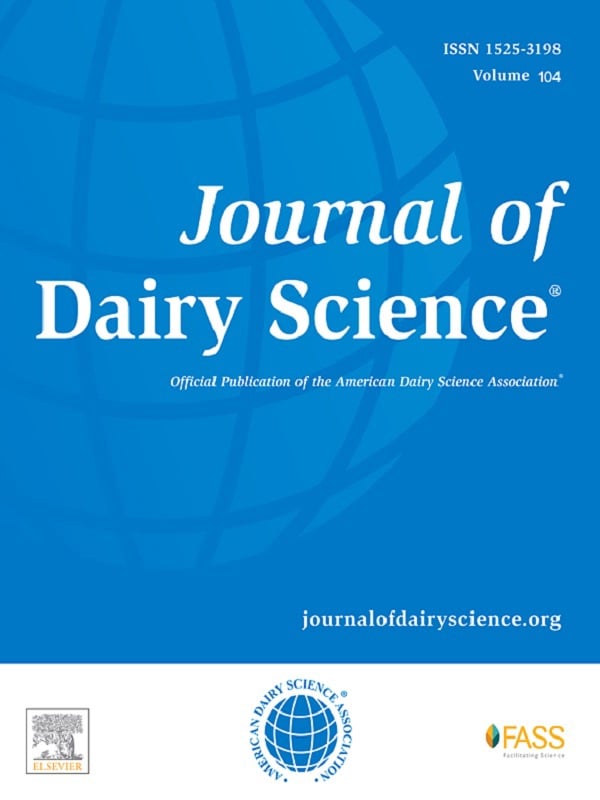ADSA Foundation Scholar Award: New frontiers in calf and heifer nutrition—From conception to puberty
By J. K. van Niekerk,1 A. J. Fischer-Tlustos,1 J. N. Wilms,1,2 K. S. Hare,1 A. C. Welboren,1 A. J. Lopez,1 T. T. Yohe,1 L. R. Cangiano,1 L. N. Leal,2 and M. A. Steele1*
1 Department of Animal Biosciences, Animal Science and Nutrition, University of Guelph, Guelph, ON, Canada N1G 1Y2
2 Trouw Nutrition Research and Development, PO Box 299, 3800 AG, Amersfoort, the Netherlands
- Ruminants
- 2021
- Dairy
- Open Access
A. J. Fischer-Tlustos, J. N. Wilms, K. S. Hare, A. C. Welboren, A. J. Lopez, T. T. Yohe, L. R. Cangiano, L. N. Leal, M.A. Steele

ABSTRACT
Dairy calf nutrition is traditionally one of the most overlooked aspects of dairy management, despite its large effect on the efficiency and profitability of dairy operations. Unfortunately, among all animals on the dairy farm, calves suffer from the highest rates of morbidity and mortality. These challenges have catalyzed calf nutrition research over the past decade to mitigate high incidences of disease and death, and improve animal health, growth, welfare, and industry sustainability. However, major knowledge gaps remain in several crucial stages of development. The purpose of this review is to summarize the key concepts of nutritional physiology and programming from conception to puberty and their subsequent effects on development of the calf, and ultimately, future performance. During fetal development, developmental plasticity is highest. At this time, maternal energy and protein consumption can influence fetal development, likely playing a critical role in calf and heifer development and, importantly, future production. After birth, the calf's first meal of colostrum is crucial for the transfer of immunoglobulin to support calf health and survival. However, colostrum also contains numerous bioactive proteins, lipids, and carbohydrates that may play key roles in calf growth and health. Extending the delivery of these bioactive compounds to the calf through a gradual transition from colostrum to milk (i.e., extended colostrum or transition milk feeding) may confer benefits in the first days and weeks of life to prepare the calf for the preweaning period. Similarly, optimal nutrition during the preweaning period is vital. Preweaning calves are highly susceptible to health challenges, and improved calf growth and health can positively influence future milk production. Throughout the world, the majority of dairy calves rely on milk replacer to supply adequate nutrition. Recent research has started to re-evaluate traditional formulations of milk replacers, which can differ significantly in composition compared with whole milk. Transitioning from a milk-based diet to solid feed is critical in the development of mature ruminants. Delaying weaning age and providing long and gradual step-down protocols have become common to avoid production and health challenges. Yet, determining how to appropriately balance the amount of energy and protein supplied in both liquid and solid feeds based on preweaning milk allowances, and further acknowledging their interactions, shows great promise in improving growth and health during weaning. After weaning and during the onset of puberty, heifers are traditionally offered high-forage diets. However, recent work suggests that an early switch to a high-forage diet will depress intake and development during the time when solid feed efficiency is greatest. It has become increasingly clear that there are great opportunities to advance our knowledge of calf nutrition; yet, a more concentrated and rigorous approach to research that encompasses the long-term consequences of nutritional regimens at each stage of life is required to ensure the sustainability and efficiency of the global dairy industry.